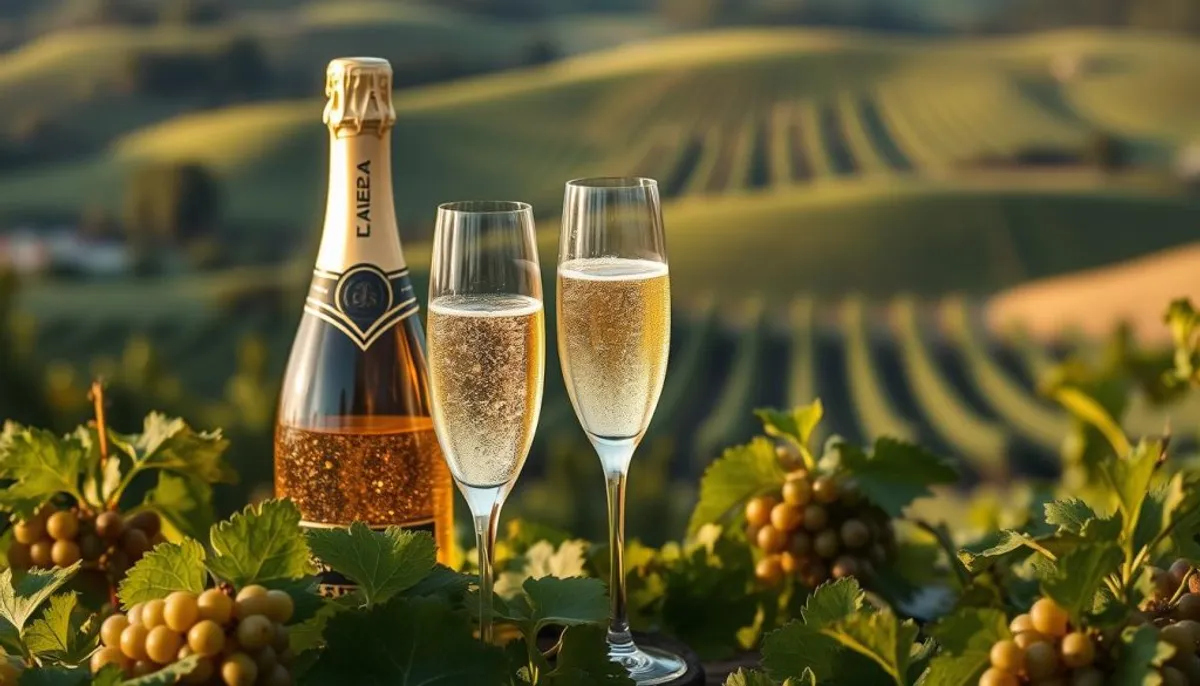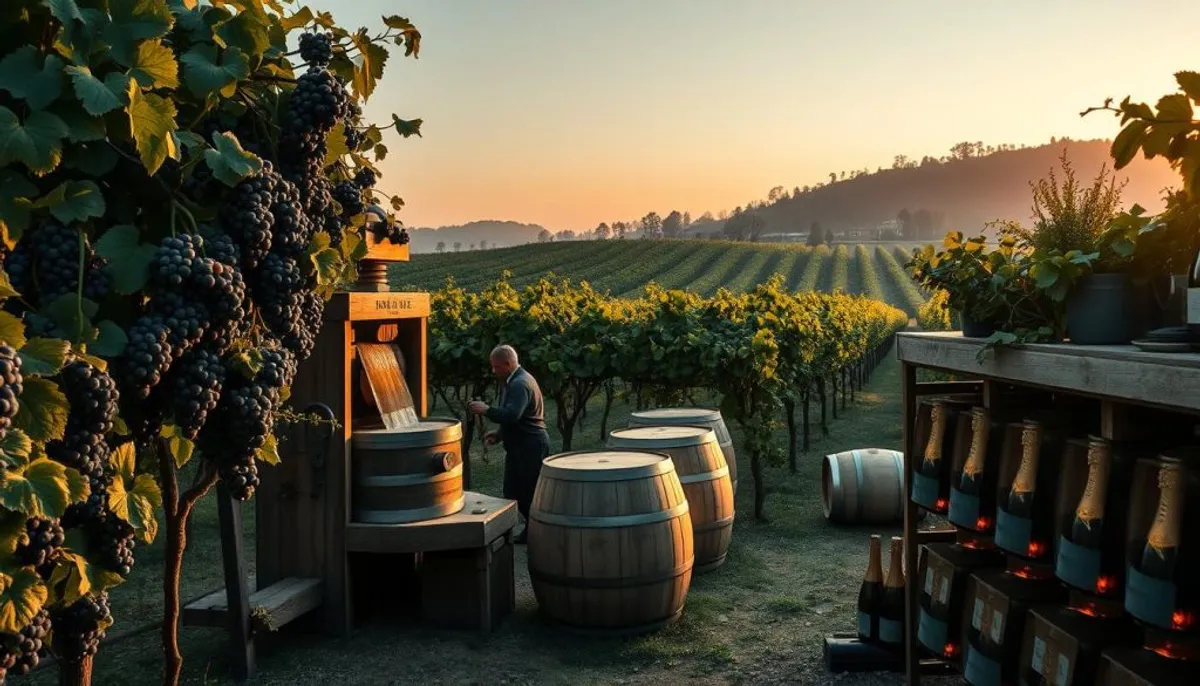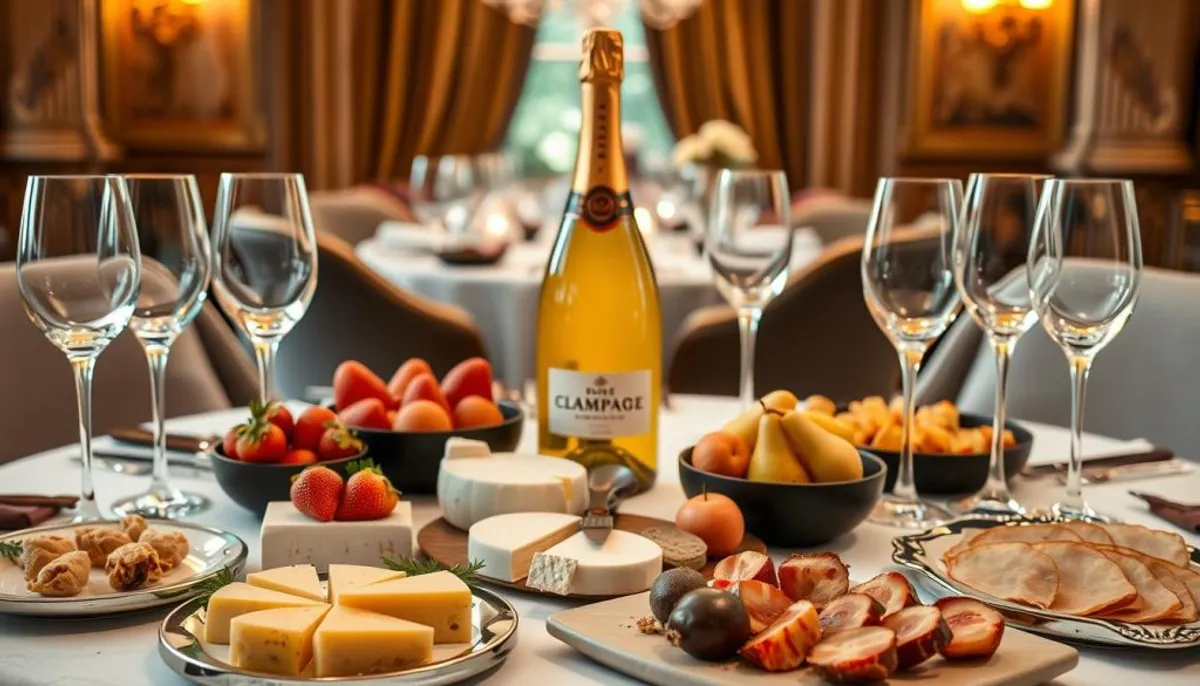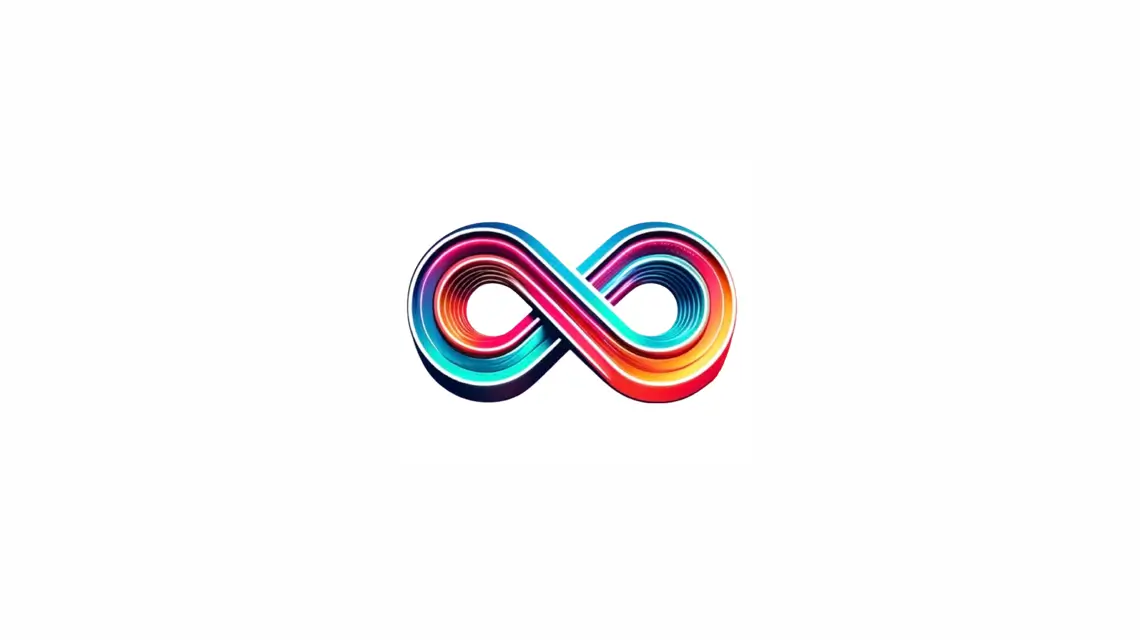Step into the world of Veuve Alary, a prestigious French champagne house that embodies luxury and refinement. This premium champagne brand has carved its niche in the competitive sparkling wine market. It offers a range of exquisite cuvées that captivate connoisseurs worldwide.

Veuve Alary’s commitment to quality shines through in every bottle, reflecting the rich heritage of the Champagne region. Their meticulous approach to craftsmanship results in a premium champagne that stands out among luxury sparkling wines.
From vine to glass, Veuve Alary upholds the highest standards of French champagne production. The brand’s dedication to excellence has earned it a place among the most sought-after names in the industry. It appeals to those who appreciate the finer things in life.
Key Takeaways
- Veuve Alary is a renowned French champagne house
- The brand offers a collection of premium cuvées
- Veuve Alary champagnes are exported globally
- The brand upholds traditional champagne-making methods
- Veuve Alary is known for exceptional quality and refinement
The History of “Veuve” in French Champagne
The term “Veuve” holds a special place in French wine culture, notably in the champagne industry. This word, meaning “widow” in French, is synonymous with some of the most prestigious champagne brands worldwide.
The Meaning Behind “Veuve” in French Wine Culture
In the champagne region, “Veuve” transcends mere marital status. It embodies resilience, innovation, and leadership. Many widows took over their husbands’ champagne houses, transforming them into global leaders.
Historical Impact of Widows on Champagne Industry
Widows in the champagne industry have made a lasting impact. Veuve Clicquot, Bollinger, Laurent-Perrier, and Pommery are renowned houses founded or expanded by widows. These female champagne makers revolutionized production and expanded into new markets.
The Rise of Women-Led Champagne Houses
Today, the legacy of these pioneering widows endures. Out of 349 Champagne houses generating 4.4 billion euros annually, many are led by women. Veuve Clicquot, now part of LVMH, the world’s largest Champagne maker, boasts an equal gender ratio in its management and board.
| Champagne House | Founded/Expanded by | Notable Achievements |
|---|---|---|
| Veuve Clicquot | Barbe-Nicole Clicquot | Invented riddling process, near-equal gender parity in management |
| Bollinger | Lily Bollinger | Expanded brand internationally over three decades |
| Pommery | Louise Pommery | Created brut champagne, now part of second-largest Champagne maker |
The champagne industry continues to evolve, with initiatives like Veuve Clicquot’s Bold program aiming to highlight women entrepreneurs globally. This rich history of female leadership has undoubtedly contributed to the industry’s current $61 billion market value.
Understanding Premium French Champagne Production
Premium French champagne production is a meticulous process deeply rooted in tradition. The Champagne region of France is the exclusive birthplace of this celebrated sparkling wine. The méthode champenoise, the traditional champagne-making technique, sets the standard for quality and taste.
Champagne production begins with careful grape selection. Producers harvest grapes by hand to ensure only the finest fruits are used. The grapes undergo pressing, and the juice ferments into a base wine. This base wine then undergoes a second fermentation in the bottle, a key step in the méthode champenoise.
During aging, champagne develops its complex flavors. The wine rests on lees, or dead yeast cells, which contribute to its unique taste profile. After aging, the bottles undergo riddling and disgorgement to remove sediment. Lastly, producers add a dosage to balance the wine’s sweetness before corking.
The Champagne region’s unique terroir plays a crucial role in champagne production. The chalky soil and cool climate contribute to the grapes’ distinct characteristics. This terroir, combined with centuries-old techniques, results in a product that’s truly one-of-a-kind.
| Production Step | Details |
|---|---|
| Grape Harvesting | Hand-picked to ensure quality |
| Primary Fermentation | Creates base wine |
| Secondary Fermentation | Occurs in bottle, creates bubbles |
| Aging on Lees | Enhances flavor complexity |
| Riddling and Disgorgement | Removes sediment |
| Dosage | Balances sweetness |
The Legacy of Veuve Alary in French Wine Making
Veuve Alary champagne epitomizes French wine heritage. This esteemed brand upholds the tradition of widow-led champagne houses, emphasizing family values and superior quality. The Alary family’s unwavering dedication to their craft has cemented their reputation in the champagne industry.
Family Heritage and Tradition
The Alary family’s winemaking legacy extends across generations. Their commitment to preserving French wine heritage is evident in every bottle of Veuve Alary champagne. The brand’s success parallels that of other notable widow-led houses, such as Veuve Clicquot. Under Barbe-Nicole Ponsardin’s leadership, Veuve Clicquot became one of Europe’s most successful enterprises.
Vineyard Location and Terroir
Veuve Alary’s vineyards benefit from the unique champagne terroir. The distinctive soil composition and climate of the Champagne region contribute to the exquisite flavor profile of their wines. This special terroir is a crucial factor in producing the high-quality grapes used in Veuve Alary champagne.
Signature Production Methods
Veuve Alary employs signature production techniques that honor traditional methods while embracing modern innovations. Like the pioneering Widow Clicquot, who revolutionized champagne production, Veuve Alary continues to refine its processes. Their approach combines time-honored practices with cutting-edge technology to create exceptional champagne, including the renowned southland champagne sx.
| Aspect | Veuve Alary Approach |
|---|---|
| Grape Selection | Hand-picked from premium vineyards |
| Fermentation | Traditional method with modern temperature control |
| Aging | Extended periods in historic chalk cellars |
| Blending | Expertly crafted by skilled cellar masters |
The Art of Champagne Making: From Grape to Glass
The champagne making process is a meticulous craft that transforms grapes into a sparkling masterpiece. This journey begins with careful grape selection and ends with a perfectly aged bottle of bubbly.
Traditional Méthode Champenoise
The heart of champagne production lies in the traditional Méthode Champenoise. This time-honored technique involves multiple stages, each crucial to creating the distinct character of premium champagne.

The process starts with primary fermentation, followed by blending. Then comes the magic – secondary fermentation in the bottle. This step creates those fine bubbles champagne is famous for.
Grape Selection and Harvesting
Selecting the right grape varieties for champagne is paramount. The three main types used are Chardonnay, Pinot Noir, and Pinot Meunier. Each brings unique qualities to the blend:
- Chardonnay: Adds finesse and elegance
- Pinot Noir: Provides body and structure
- Pinot Meunier: Contributes fruitiness and roundness
Aging and Maturation Process
Champagne aging is a critical phase that can last several years. During this time, the wine develops complex flavors and aromas. The process involves:
- Aging on lees
- Riddling
- Disgorgement
- Dosage
This extended aging contributes to the depth and complexity found in premium champagnes. For instance, Dom Pérignon 2009, priced at €59 per glass, showcases the results of this careful aging process.
| Grape Variety | Characteristics | Typical Aging Time |
|---|---|---|
| Chardonnay | Crisp, elegant | 3-5 years |
| Pinot Noir | Full-bodied, robust | 4-7 years |
| Pinot Meunier | Fruity, round | 2-4 years |
Distinctive Characteristics of Premium Champagne
Premium champagne is distinguished by its unique qualities, setting it apart from other sparkling wines. Its champagne quality is evident in every sip, making it a favorite among wine enthusiasts globally.
Fine, persistent bubbles are a hallmark of premium sparkling wine. These tiny bubbles dance in the glass, creating a mesmerizing visual experience. The complex aroma profile tantalizes the senses, offering a preview of the exquisite taste to come.
Champagne tasting notes reveal a wide range of flavors. From crisp and dry to rich and creamy, each style offers a unique experience. High-quality champagnes often display hints of citrus, stone fruits, toast, and brioche. The long, elegant finish leaves a lasting impression on the palate.
| Characteristic | Description |
|---|---|
| Bubbles | Fine and persistent |
| Aroma | Complex and enticing |
| Taste | Ranges from crisp to creamy |
| Flavor Notes | Citrus, stone fruits, toast, brioche |
| Finish | Long and elegant |
The balanced acidity in premium champagne adds to its refreshing nature. This perfect balance of flavors and textures contributes to the overall champagne quality. It makes it a truly exceptional drink for special occasions or everyday indulgence.
The Role of Widows in Shaping Modern Champagne
Women have been instrumental in the evolution of champagne, transforming it into the luxurious drink we adore today. The contributions of widows, or “veuves” in French, have been crucial. They have driven champagne innovations and secured its global recognition.
Veuve Clicquot’s Revolutionary Innovations
Veuve Clicquot stands as a beacon in the champagne world. Madame Clicquot’s groundbreaking work included the creation of rosé champagne by blending red and white wines. She also introduced the riddling rack, a device that remains essential in champagne production today. These innovations cemented champagne’s status as a luxury item globally.
Veuve Pommery’s Contribution to Brut Style
Veuve Pommery’s legacy is marked by the creation of the first brut champagne. This drier style, developed at Queen Victoria’s request, significantly altered the taste of champagne. It became a hit, opening new markets and shaping future production.
Legacy of Female Leadership in Champagne
The influence of these pioneering widows goes beyond their individual achievements. Their success has paved the way for more women to lead in the champagne industry, including areas like patio design. Today, numerous women hold critical positions in champagne houses, carrying on the tradition of innovation and excellence.
| Widow | Innovation | Impact |
|---|---|---|
| Veuve Clicquot | Rosé champagne, Riddling rack | Improved clarity, New champagne style |
| Veuve Pommery | Brut champagne | Drier taste profile, Expanded market |
Champagne Tasting Notes and Profiles
Embarking on the journey of champagne flavor profiles is a thrilling adventure for connoisseurs. A detailed champagne tasting guide uncovers the subtle differences across various styles. From the sharp Brut Nature to the luscious Doux, each style presents a distinct sensory adventure.
During champagne tasting, pay attention to its appearance, aroma, taste, and finish. Top-tier champagnes often boast intricate flavors, blending fruit notes with yeasty and mineral undertones. The 96 Bollinger vintage exemplifies superior quality, while the ’02 Grand Annee is a standout among its contemporaries.
| Champagne Style | Sweetness Level | Flavor Profile |
|---|---|---|
| Brut Nature | Bone Dry | Crisp, mineral-driven |
| Extra Brut | Very Dry | Citrusy, light body |
| Brut | Dry | Balanced, versatile |
| Extra Dry | Off-Dry | Fruity, slightly sweet |
| Doux | Sweet | Rich, dessert-like |
Renowned producers such as Selosse, Krug, and Charles Heidsieck present unique flavor profiles. Aging is pivotal in enhancing champagne’s complexity. For instance, vintage rosés often display greater depth than non-vintage ones. As you explore different styles, you’ll uncover your personal preferences and deepen your appreciation for this refined sparkling wine.
Food Pairing and Serving Suggestions
Mastering the art of champagne food pairing and serving techniques can significantly enhance your dining experience. We will explore the nuances of serving champagne and uncover ideal food combinations.
Optimal Temperature and Glassware
Ensuring champagne is served at the correct temperature is paramount. Aim for a chilling temperature of 8-10°C (46-50°F) for optimal flavor. When it comes to glassware, tulip-shaped flutes are the preferred choice. These glasses are designed to preserve the champagne’s effervescence and concentrate its aromas, elevating the drinking experience.
Complementary Food Selections
Champagne’s versatility makes it a suitable accompaniment to a variety of dishes. It pairs exceptionally well with seafood, cheese, and even fried delicacies. For a distinctive touch, consider pairing Veuve Clicquot Brut with spring rolls during Lunar New Year celebrations. The combination of steamed fish, a symbol of prosperity in Chinese culture, with a crisp white wine, offers a delightful contrast.
Special Occasion Pairings
For significant events, consider these pairing suggestions:
| Occasion | Champagne | Food Pairing |
|---|---|---|
| Wedding | Moët et Chandon Brut Imperial | Oysters |
| Anniversary | Veuve Clicquot Vintage | Truffle Risotto |
| New Year’s Eve | Dom Perignon | Caviar Blinis |
Remember, champagne food pairing is an art form. Feel free to experiment with different combinations to discover your ideal pairing.

Champagne Storage and Preservation
Proper storage of champagne is essential for preserving its quality and taste. The right conditions in a champagne cellar are crucial for maintaining the wine’s essence. We will discuss the best methods for storing champagne and its aging potential.
To store champagne effectively, one must create an optimal environment. Bottles should be laid horizontally in a cool, dark space with consistent humidity. The ideal storage temperature for champagne ranges from 10°C to 13°C. This range helps to conserve the wine’s subtle flavors and effervescence.
The aging potential of champagne varies by type. Non-vintage champagnes can remain unopened for three to four years. In contrast, vintage cuvées can age well for five to ten years. Some exceptional vintage champagnes may even enhance with longer aging.
| Champagne Type | Aging Potential | Optimal Storage Temperature |
|---|---|---|
| Non-Vintage | 3-4 years | 10°C-13°C |
| Vintage | 5-10 years | 10°C-13°C |
When it’s time to serve, chill your champagne to 8°C-10°C for the best experience. It’s important to note that a bottle of champagne contains about five to six atmospheric pressure. Thus, handle it with care, as the cork can pop out at an impressive 50 mph!
By adhering to these storage guidelines, you will ensure your champagne remains in its finest condition. It will be ready to be enjoyed at its peak.
Export and Global Distribution
The global champagne market has witnessed extraordinary growth, with top-tier brands like Veuve Alary expanding their global footprint. The champagne export sector has emerged as a key driver of the industry’s prosperity, attracting new consumers globally.
International Market Presence
Luxury champagne houses have made substantial progress in global distribution. For example, LVMH, a leading player in the luxury goods market, boasts a vast network of over 1,700 stores worldwide. This extensive network enables premium champagne brands to access diverse markets, catering to discerning clients who seek unparalleled quality.
Shipping and Handling Standards
Premium brands adhere to rigorous shipping and handling standards to preserve the integrity of their products during export. These standards ensure that champagne reaches its destination in pristine condition, maintaining its quality and flavor. Essential components include proper temperature control and meticulous packaging.
Authenticity Verification
In the burgeoning global champagne market, ensuring champagne authenticity is of utmost importance. Producers employ various strategies to safeguard their brands and reassure consumers. These include unique bottle markings, appellation labels, and advanced tracking systems. For instance, Louis Vuitton, part of the LVMH group, introduced three new leather goods lines in 2005, highlighting the significance of product innovation and authenticity in luxury markets.
The champagne industry remains committed to innovation and adaptation to fulfill global demand. With a focus on quality, authenticity, and strategic distribution, premium champagne brands are poised to excel in the international market.
Modern Innovation in Traditional Methods
The champagne industry is undergoing a transformation, blending modern advancements with time-honored practices. Producers are integrating cutting-edge champagne technology to elevate quality and consistency. This fusion of old and new is revolutionizing French winemaking.
Sustainable viticulture is becoming increasingly prevalent among champagne producers. Many are adopting organic and biodynamic farming methods. These approaches not only safeguard the environment but also enhance grape quality. Thus, the final product embodies the authentic essence of its terroir.
Champagne production innovations are also transforming cellar operations. Precision winemaking techniques offer greater control over fermentation. Advanced temperature control systems ensure optimal aging conditions. These technological advancements uphold the high standards of premium champagne.
Data-driven decision making is another significant innovation. Winemakers now leverage analytics to pinpoint the perfect harvest time. This precision results in grapes with optimal sugar and acidity levels. The outcome is a more refined and complex champagne.
Despite these advancements, the essence of champagne making remains unchanged. The méthode champenoise continues to hold its place as the gold standard. This delicate balance between innovation and tradition ensures champagne’s enduring appeal to wine enthusiasts globally.
Conclusion
Veuve Alary’s premium French champagne epitomizes the industry’s rich heritage and ongoing innovation. This brand captures the essence of widow-led champagne houses, pivotal in shaping today’s champagne landscape. The Veuve Alary legacy enchants wine aficionados globally, presenting a blend of luxury and tradition in every sip.
The art of champagne appreciation has undergone a significant transformation. Today, wine connoisseurs taste thousands of samples each year, meticulously choosing the most outstanding ones. For example, in 2022, a reviewer evaluated over 3,000 wines, ultimately selecting more than 100 exceptional ones. This meticulous selection process guarantees that only the finest champagnes, such as Veuve Alary, are celebrated.
As global interest in premium French champagne intensifies, Veuve Alary continues to lead the industry. The brand’s dedication to quality, rooted in centuries-old traditions and modern expertise, offers an unmatched sparkling wine experience. From the selection of its grapes to its meticulous production, Veuve Alary embodies the timeless appeal of this celebrated French export.
RelatedRelated articles



